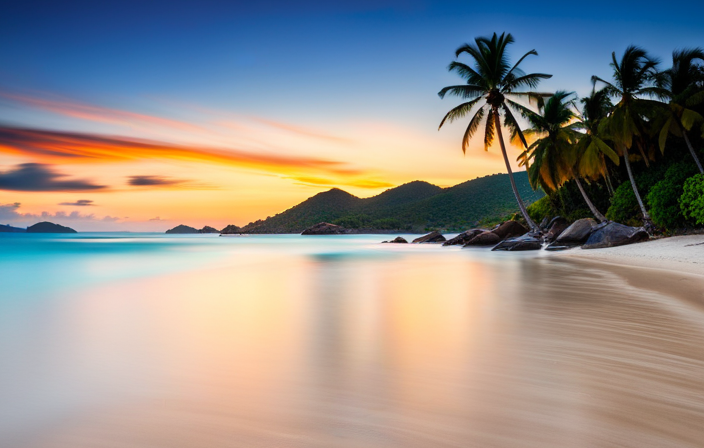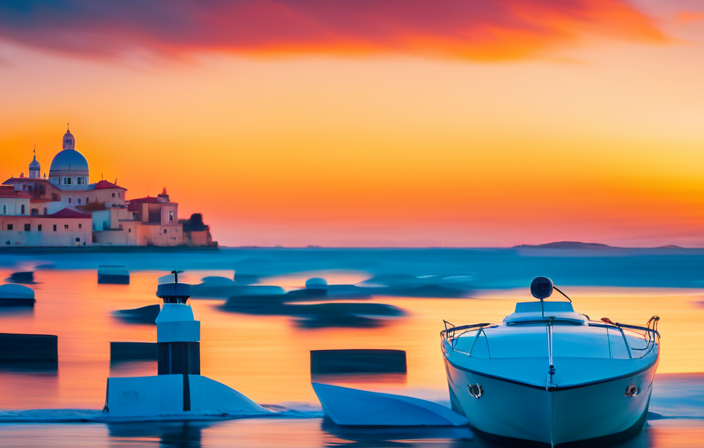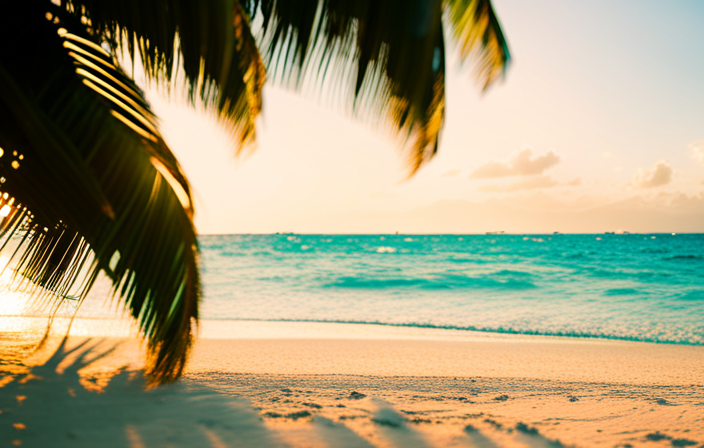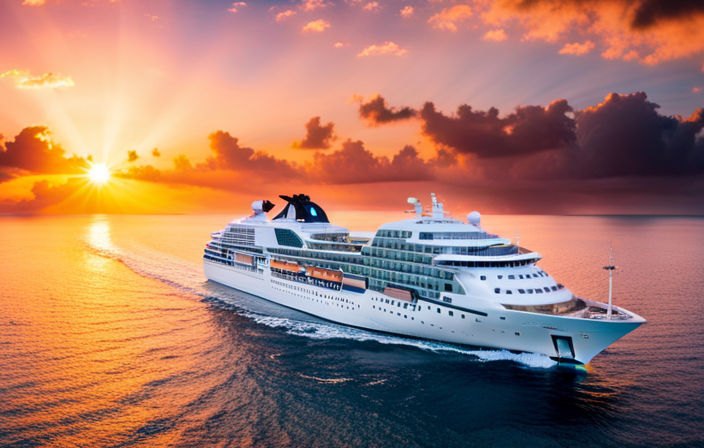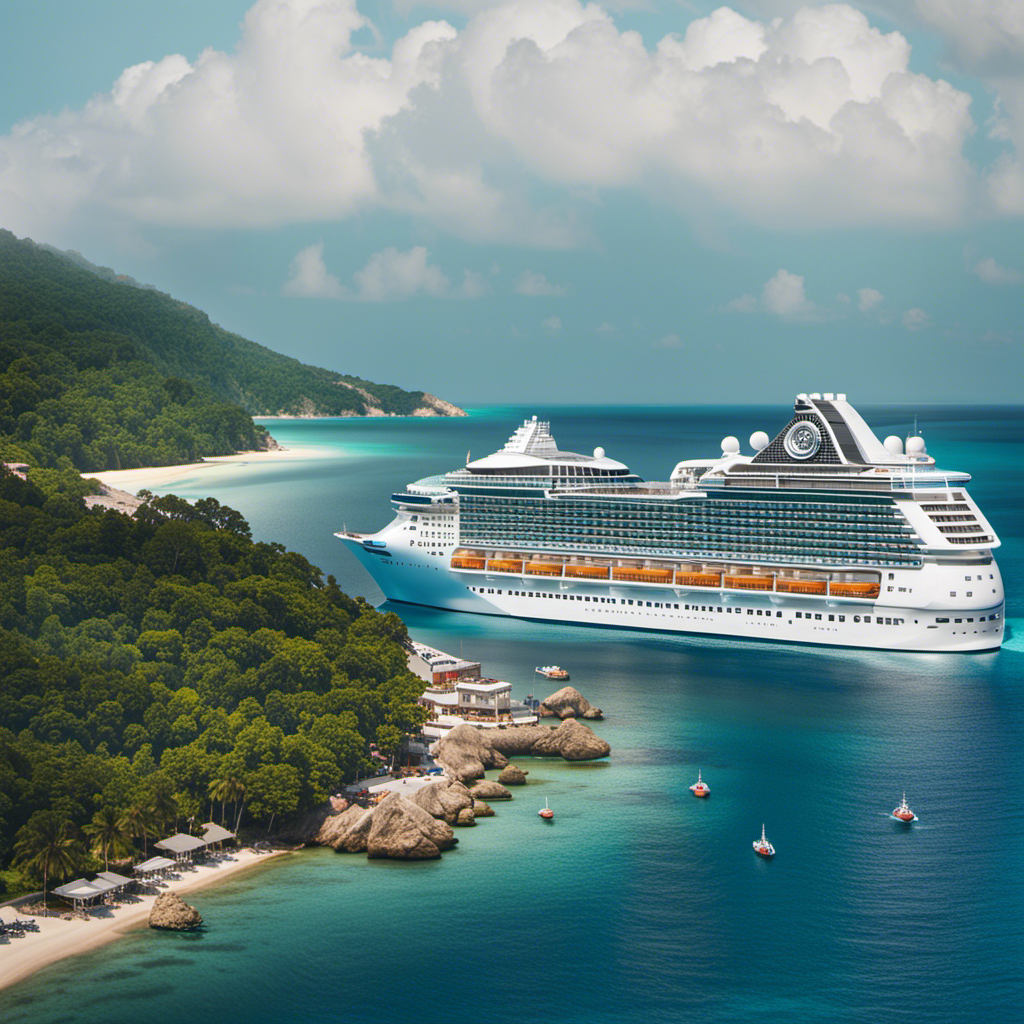Sipping kava from a coconut shell, I deeply recognize the significant cultural value that this drink holds in Fiji.
The preparation and drinking rituals, passed down through generations, are a fascinating blend of tradition and community.
With each sip, the tranquility washes over me, making me appreciate the subtle stupor that comes with indulging in this cultural treasure.
Join me as we explore the history, rituals, and effects of kava consumption in Fiji, a truly unique experience.
Key Takeaways
- Kava is made from the dried, pounded, and powdered root of the Yaqona plant, and is prepared in a ceremonial bowl called a tenoa.
- Kava drinking has a ritualistic process, where the first drink is offered to the chief before being consumed individually by guests. It is passed to each guest in coconut shells, and a clap with cupped hands followed by a loud Bula is given before accepting the cup.
- Kava consumption can induce relaxation and quiet down conversations, with the effects becoming more pronounced after two or three servings.
- Kava holds deep cultural significance in Fiji, and when visiting a village, it is customary to present a ribbon tied bunch of Yaqona as a gift to the village chief or elder.
The History of Kava in Fiji
I find it fascinating to learn about the history of kava in Fiji.
The cultural significance of kava ceremonies in Fiji is deeply rooted in tradition and community bonding.
Kava, made from the dried and powdered root of the Yaqona plant, is prepared in a ceremonial bowl called a tenoa. It is then served to guests in coconut shells, with the first drink always offered to the village chief.
Over time, the consumption habits of kava have evolved in modern Fijian society. While some locals drink kava every day, others take breaks due to its potential impact on productivity.
Drinking kava can induce relaxation and quiet conversations, with the brain settling into a subtle stupor after a few servings.
Despite the availability of thrilling activities in Fiji, such as surfing and hiking, kava drinking and embracing the island time mentality remain popular leisure choices.
Traditional Kava Preparation and Drinking Rituals
When visiting a village in Fiji, it is customary to present a ribbon tied bunch of Yaqona as a gift to the village chief or elder. This gesture of respect and gratitude signifies the cultural significance of kava in Fijian ceremonies.
As I observed the social aspect of kava drinking in Fijian communities, I learned that it is more than just a beverage. It is a symbol of unity, friendship, and relaxation. The preparation and drinking rituals surrounding kava create a sense of community and belonging.
From the first drink offered to the chief to the passing of coconut shells, each step is steeped in tradition and etiquette. Kava acts as a catalyst for conversation, laughter, and peacefulness, bringing people together in a shared experience.
Through these rituals, the Fijian people preserve their cultural heritage and foster connections within their communities.
The Cultural Significance of Kava in Fijian Villages
Drinking kava in Fijian villages fosters a sense of community and strengthens cultural connections. The cultural significance of kava in Fiji is deeply rooted in the traditional preparation and drinking rituals.
Kava is made from the dried, pounded, and powdered root of the Yaqona plant. The root is soaked in water in a ceremonial bowl called a tenoa, creating a muddy water appearance and a slightly bitter taste.
During the drinking ritual, the first cup is offered to the village chief, followed by individual cups for the guests. Each cup is passed one at a time, and before accepting, a clap with cupped hands is given along with a loud Bula.
The more kava one drinks, the quieter they become. This tradition creates a unique space for bonding and sharing within the Fijian village community, allowing cultural practices to be preserved and celebrated.
The Effects of Kava Consumption on Productivity
Indulging in excessive kava consumption can hinder productivity and efficiency in daily tasks. Research has shown that kava has a significant impact on concentration. When consumed in excess, it can impair focus and make it difficult to stay on task. This can have negative effects on one’s ability to complete work or engage in complex activities.
Additionally, kava’s influence on social interactions can be detrimental. While it is true that kava induces relaxation, it can also lead to a decrease in social interaction. People who consume excessive amounts of kava may become quieter and less engaged in conversations. This can affect relationships and hinder effective communication.
Therefore, it is important to consume kava in moderation to maintain productivity and healthy social interactions.
Exploring the Island Time Mentality in Fiji
While exploring Fiji, I couldn’t help but embrace the island time mentality and immerse myself in the relaxed pace of life. The island time mentality is a cultural attitude that emphasizes slowing down, enjoying the present moment, and prioritizing relationships over schedules. It is a refreshing change from the fast-paced lifestyle I am accustomed to.
During my time in Fiji, I had the opportunity to fully immerse myself in the island time mentality and truly understand its significance in Fijian culture. Through cultural immersion, I learned that this mentality not only affects the way Fijians approach their daily lives but also influences their interactions with others. It fosters a sense of community, encourages leisure activities such as kava drinking, and creates an environment where people can truly relax and connect with one another.
Nacula Island: A Paradise for Kava Enthusiasts
After immersing myself in the laid-back island time mentality of Fiji, I found myself drawn to the enchanting Nacula Island. Known for its pristine beaches and vibrant coral reefs, Nacula Island is also a paradise for kava enthusiasts. Exploring the kava culture on this idyllic island is a journey of relaxation and connection.
One of the highlights of my visit was embracing the traditional kava drinking rituals. To give you a glimpse of this immersive cultural experience, here is a table showcasing the step-by-step process:
| Step | Ritual |
|---|---|
| 1 | The kava root is pounded and powdered. |
| 2 | The powdered root is placed in a silk bag and soaked in water in a ceremonial bowl called a tenoa. |
| 3 | The resulting beverage, with its muddy water appearance and slightly bitter taste, is prepared. |
| 4 | The first drink is offered to the chief of the village before being consumed individually by guests. |
| 5 | The drink is spooned into coconut shells and passed to each guest one at a time. |
| 6 | Before accepting the cup, a clap with cupped hands is given followed by a loud Bula. |
| 7 | Guests can choose a low tide (half cup) or a high tide (full cup) but must drink it all in one go. |
| 8 | After finishing the cup, three hollowed hand claps are given before passing the drink to the next person. |
| 9 | The more kava you drink, the quieter you become. |
| 10 | After eight or ten rounds, you may experience a deep sleep and a numbing feeling on the tongue. |
These rituals not only enhance the taste of the kava but also symbolize the unity and respect within the community. By participating in these customs, I felt a deep connection to the Fijian culture and its traditions.
But the kava culture on Nacula Island extends beyond the drinking rituals. It is a way of life for the locals, with some indulging in kava every day, while others take breaks to maintain productivity. The islanders understand the power of kava to induce relaxation and quiet down conversations, allowing them to fully embrace the bula spirit and the island’s serene ambiance.
While Fiji offers a range of thrilling activities such as surfing, paddleboarding, hiking, and fishing, on Nacula Island, kava drinking takes center stage. Visitors can explore the island’s breathtaking beauty and immerse themselves in the local kava culture. The Yaqona plant, used to make kava, holds a special place in Fijian traditions, making Nacula Island the perfect destination for those seeking a journey of relaxation, connection, and cultural immersion.
Thrilling Activities in Fiji Beyond Kava Drinking
Exploring the beautiful islands of Fiji, I discovered an array of exhilarating activities that go beyond the traditional kava drinking experience. Here are four thrilling activities that will leave you breathless and craving for more:
-
Eco Tourism Opportunities: Fiji is a paradise for nature lovers. From snorkeling in vibrant coral reefs to hiking through lush rainforests, there are countless opportunities to immerse yourself in the breathtaking natural beauty of the islands. Swim with manta rays, explore hidden waterfalls, or embark on a thrilling zip line adventure through the treetops.
-
Cultural Festivals and Events: Fiji is rich in culture and tradition, and attending a cultural festival or event is a must-do experience. From the vibrant colors of the Hibiscus Festival to the adrenaline-pumping excitement of the Bula Festival, these events offer a unique insight into the Fijian way of life. Dance to the rhythm of traditional music, taste delicious local cuisine, and witness awe-inspiring firewalking ceremonies.
-
Surfing: Fiji is renowned for its world-class surf breaks, attracting surfers from around the globe. Whether you’re a seasoned pro or a beginner, the powerful waves of Cloudbreak and Restaurants will provide an unforgettable surfing experience. Grab your board and ride the waves of the Pacific Ocean, surrounded by stunning scenery and the warm Fijian hospitality.
-
Adventure Sports: Fiji offers a wide range of adrenaline-pumping activities for thrill-seekers. Try your hand at paddleboarding, kayaking, or jet skiing in the crystal-clear waters. For those seeking an even bigger adrenaline rush, skydiving over the stunning islands of Fiji will take your breath away. Soar through the sky and witness the breathtaking panoramic views of the islands beneath you.
With its abundant eco tourism opportunities and vibrant cultural festivals, Fiji offers much more than just kava drinking. So, pack your bags and get ready for an adventure of a lifetime in this tropical paradise.
The Role of the Yaqona Plant in Fijian Traditions
As I continue to explore the cultural significance of kava in Fiji, it is important to understand the role of the yaqona plant, from which kava is made, in Fijian traditions.
The yaqona plant has been used for centuries in traditional Fijian medicine and healing practices. Its roots are known for their calming and sedative properties, making them a popular remedy for anxiety, stress, and insomnia.
In addition to its medicinal uses, the yaqona plant plays a vital role in Fijian spiritual and ceremonial rituals. It is customary to present a gift of yaqona to the village chief or elder when visiting a village, symbolizing respect and gratitude.
Furthermore, the preparation and drinking of kava itself is a ceremonial ritual, where the yaqona root is soaked in water and consumed in a communal gathering, fostering a sense of unity, connection, and relaxation among the participants.
The yaqona plant truly holds a special place in Fijian traditions.
The Unique Appearance and Taste of Kava
When I first tried kava, I was surprised by its muddy water appearance and slightly bitter taste. However, I soon learned that these characteristics are integral to the cultural significance and sensory experience of kava in Fiji. Here are three key points to consider:
-
Cultural Significance: Kava holds deep cultural importance in Fiji. It is often consumed during village ceremonies and is used as a symbol of respect and hospitality. Presenting a gift of Yaqona, the plant used to make kava, is customary when visiting a village.
-
Sensory Experience: The appearance of kava, resembling muddy water, may not be visually appealing, but it adds to the authenticity and tradition of the drink. The slightly bitter taste is part of the unique sensory experience, giving it a distinct flavor profile.
-
Ritualistic Consumption: Drinking kava involves specific rituals, such as offering the first cup to the village chief and passing coconut shells of kava to guests in a specific order. These rituals enhance the overall cultural experience and create a sense of community.
Daily Habits of Kava Drinking in Fiji
After learning about the unique appearance and taste of kava, I became curious about the daily habits of kava drinking in Fiji. It seems that kava holds a significant place in Fijian culture, with some locals partaking in daily kava rituals while others take breaks. Drinking too much kava can affect productivity, but it can also induce relaxation and quiet down conversations. In fact, after two or three servings, the brain may settle into a subtle stupor.
To delve deeper into the topic, let’s take a look at the health benefits of kava in a table format:
| Health Benefits of Kava | Daily Kava Rituals |
|---|---|
| Reduces anxiety and stress | Some locals drink kava every day |
| Promotes relaxation | Others take breaks from kava drinking |
| Improves sleep quality | Drinking too much kava can affect productivity |
| Relieves muscle tension | Kava can induce a subtle stupor after a few servings |
It is fascinating to see how kava not only plays a role in social interactions but also offers potential health benefits to those who partake in its daily rituals.
Finding Relaxation and Connection Through Kava
Finding relaxation and connection through the daily rituals of drinking kava has been a transformative experience for me.
The social aspect of kava drinking in Fiji is a key component of its appeal. Sitting in a circle with friends and locals, passing around coconut shells filled with the muddy water-like beverage, creates a sense of community and bonding. This communal practice fosters a feeling of togetherness and shared experiences.
Additionally, exploring the health benefits of kava consumption adds to its allure. Kava has been known to induce relaxation, reduce anxiety, and improve sleep quality. It is also believed to have anti-inflammatory properties and may provide pain relief.
These health benefits, combined with the social aspect, make drinking kava a truly enjoyable and beneficial experience.
Frequently Asked Questions
What Are Some Popular Activities to Do in Fiji Besides Drinking Kava?
In Fiji, besides drinking kava, popular activities include snorkeling in the crystal-clear waters and hiking through lush tropical forests. These adventures allow you to explore the stunning underwater world and enjoy the breathtaking landscapes of the islands.
How Does Kava Consumption Affect Productivity?
Kava consumption can affect productivity due to its relaxing effects on the brain. While some locals drink kava every day, excessive consumption may lead to decreased cognitive performance and hinder work productivity.
Is There a Limit to How Much Kava One Can Drink in a Day?
There are limitations to excessive kava consumption in a day. It can affect productivity and may lead to a subtle stupor. However, moderate kava intake can induce relaxation and has potential health benefits.
What Are the Effects of Drinking Kava on the Tongue?
Drinking kava can cause a numbing sensation on the tongue and affect the taste buds. It’s interesting to explore the effects of this traditional drink on our sensory experience.
Are There Any Potential Negative Side Effects of Drinking Kava Regularly?
Drinking kava regularly can have potential negative side effects, including liver damage, skin problems, and decreased libido. Long-term effects may also include dependency and withdrawal symptoms. It is important to consume kava in moderation and consult with a healthcare professional.
Conclusion
In conclusion, the cultural significance of kava in Fiji cannot be overstated. Its preparation and drinking rituals hold deep meaning in Fijian villages, and it plays a significant role in fostering connections and relaxation.
However, it is important to note that excessive consumption of kava can impact productivity, as it induces a subtle stupor. For instance, a hypothetical case study could involve a group of workers who regularly drink kava during their lunch breaks. Over time, their productivity levels may decrease due to the calming effects of kava.
This highlights the need for moderation and balance when incorporating kava into daily habits.
Claire, a creative soul with an unquenchable thirst for storytelling, is an integral part of the Voyager Info team. As a dedicated writer, she weaves captivating narratives that transport readers to enchanting cruise destinations and beyond.
Claire’s love affair with writing began at an early age when she discovered the magic of words and their ability to craft worlds and emotions. Her innate curiosity led her to explore various literary genres, but it was travel writing that truly captured her heart. Drawing inspiration from her own globetrotting adventures and encounters with diverse cultures, Claire embarked on a journey to become a travel writer par excellence.


